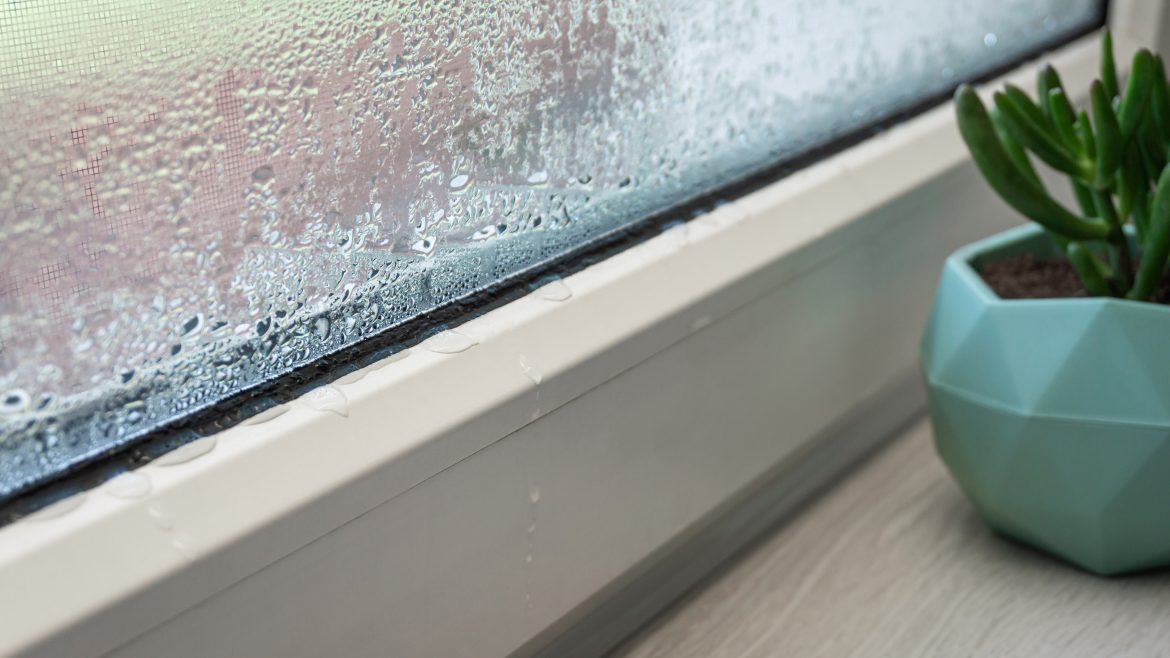If your home constantly feels damp, your windows are always foggy, or you’re spotting mould in the corners of rooms, excess humidity might be to blame. High moisture levels can lead to long-term problems—think peeling paint, warped furniture, and even respiratory issues. The good news? With a few tweaks, you can bring things back into balance.
Whether you live in a coastal city with sticky summers or a chilly spot where laundry never dries properly indoors, here’s how to dehumidify your home without going overboard.

Pexels
ALSO SEE: How to seamlessly transition into autumn décor
Start by spotting the signs of excess moisture
Before you dive into dehumidifiers or home remedies, take a walk through your space and look for signs that your home might be holding onto too much moisture. Persistent condensation on windows, black mould along skirting boards or ceilings, and that unmistakable musty smell in wardrobes or bathrooms are all red flags.
Humidity often creeps up in areas with poor ventilation—think bathrooms, kitchens, laundry rooms, or any space where airflow is limited. Indoor drying racks, leaky pipes, and everyday activities like cooking or showering can all contribute.
Natural ways to reduce humidity at home
Opening your windows might sound basic, but it works. A bit of cross-ventilation each morning can go a long way in letting humid air escape and pulling fresh air in. If privacy or security is a concern, even cracking a window open for 20 minutes can help.
Houseplants are another unsung hero. Certain varieties like peace lilies and English ivy naturally absorb moisture from the air, helping to regulate humidity while making your space feel greener and fresher.
In the kitchen, always cook with extractor fans on—or at the very least, pop a lid on your pots. In bathrooms, keep the door open after a hot shower and leave the fan running for a little longer. These small habits add up.
When to bring in a dehumidifier
If you’ve tried all the tricks and your walls still feel damp to the touch, it might be time to invest in a dehumidifier. These appliances draw moisture from the air and trap it in a tank, reducing humidity to healthier levels over time.
Choose a model based on the size of the space you’re tackling. A compact unit might be enough for a small bedroom or bathroom, but a larger area will need something with a bigger capacity. Many modern dehumidifiers are energy-efficient and come with features like timers and automatic shut-off settings, making them easy to fit into daily life.
Use it regularly in winter, when drying clothes indoors becomes unavoidable, or in any room that just never seems to feel completely dry.

Pexels
DIY moisture absorbers for tight spots
If a dehumidifier feels like too much of an investment right now, there are cheaper alternatives that can help in a pinch. Moisture-absorbing crystals or tubs (often made with silica gel or calcium chloride) are available at most hardware shops and are especially handy for cupboards, wardrobes and under-sink areas.
You can also make your own version at home using rock salt in a breathable container. It won’t be as powerful, but it can help to manage minor moisture issues while you figure out a more permanent solution.
Keep it balanced—not bone dry
While dehumidifying is essential in a damp home, it’s also important not to strip the air completely. Very dry air can cause its own problems, from cracked skin and static shocks to irritated sinuses. Ideally, indoor humidity should sit somewhere between 40% and 60%. Many dehumidifiers come with built-in humidity sensors, but you can also pick up an inexpensive hygrometer to keep tabs on levels.
Managing humidity is all about consistency. A little daily ventilation, mindful habits in the kitchen and bathroom, and the right tools for your space can make a huge difference in how your home feels and functions. Whether you go the natural route or bring in a dehumidifier, it’s not just about comfort—it’s about keeping your space healthy and mould-free, all year round.
ALSO SEE:
Featured Image: Canva

